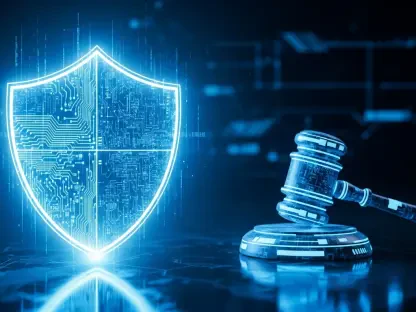Today, we’re thrilled to sit down with Desiree Sainthrope, a legal expert with a deep background in drafting and analyzing trade agreements. With her extensive knowledge of global compliance and keen interest in the intersection of law and emerging technologies like AI, Desiree offers unparalleled insights into the European Union’s latest challenges in digital regulation and international trade pressures. In this conversation, we’ll explore the EU’s innovative tools to combat economic coercion, the impact of recent US political rhetoric on tech policies, and the delicate balance between regulation and innovation in the digital sphere.
Can you explain what the EU’s Anti-Coercion Instrument is and why it was introduced?
Absolutely. The Anti-Coercion Instrument, approved by the EU in November 2023, is essentially a legal framework designed to protect the EU and its member states from economic bullying by non-EU countries. It targets situations where a foreign nation applies or threatens measures—like trade restrictions or investment barriers—to force the EU or a member state to change or adopt specific policies. This interferes with the EU’s sovereign decision-making, which is a core principle the instrument aims to defend. Initially, it was crafted with concerns about actions from countries like Russia in mind, particularly their interference in democratic processes and attempts to destabilize trust in liberal systems. It’s a way for the EU to push back against external pressures that undermine its autonomy.
How do recent US statements on tech regulations align with the purpose of the Anti-Coercion Instrument?
Well, recent rhetoric from the US, particularly from Donald Trump, fits quite neatly into the kind of behavior the Anti-Coercion Instrument was designed to address. Trump has openly threatened “substantial additional tariffs” on countries he believes are imposing unfair laws on tech companies, with the EU being a prime target due to its pioneering digital regulations. These statements can be interpreted as economic coercion because they aim to pressure the EU into altering its sovereign policies on tech governance. It’s a direct challenge to the EU’s right to regulate its own digital space, which is exactly the kind of interference the instrument seeks to counter.
Could you tell us about the scope of digital regulations the EU has implemented in recent years?
The EU has been incredibly active in this area. Over the past eight years, they’ve passed ten major laws focused on the digital sector, encompassing 591 articles across over a thousand pages. It’s a massive undertaking, involving countless lawyers, policymakers, and experts, not to mention the input from the EU’s key institutions— the Commission, Parliament, and Council. A standout example is the Digital Services Act, which imposes rules on online platforms, particularly “very large platforms” with over 45 million users in the EU. While many of these are American companies, the list also includes firms from China, Canada, and Europe itself. This shows the EU’s intent to create a level playing field, not just target one region.
What do you see as some of the biggest hurdles in the EU’s approach to regulating the digital space?
There are definitely challenges. One major issue is the sheer complexity of these laws. With hundreds of articles governing interconnected activities, contradictions can emerge, making compliance a nightmare, especially for smaller players like European startups. These companies often lack the resources to hire legal teams to navigate the regulations, putting them at a disadvantage compared to larger tech giants. Additionally, the rapid pace of technological change—think of advancements in AI like large language models—means we can’t fully predict the impact of these rules. It’s almost certain that some regulations will need adjustments as unforeseen consequences arise.
Even with these challenges, why do you think the EU should stand firm against external pressures to alter its tech policies?
Despite the flaws, the EU must hold its ground. Caving to external pressure, especially from the US, would severely damage the EU’s credibility. It would signal a lack of confidence in its own regulatory framework and suggest that its sovereignty is up for negotiation. As for claims that EU rules unfairly target American tech firms, I’d argue that’s not the case. The regulations, like the Digital Services Act, apply based on size and reach, not nationality. Backing down would undermine the EU’s position as a global leader in setting digital standards, which is a role it has worked hard to establish.
Can you walk us through how the EU might deploy the Anti-Coercion Instrument in response to these US threats?
Certainly. If the EU decides to act, the first step would be to launch an investigation into whether the US statements and potential actions, like imposing tariffs, constitute economic coercion under the instrument’s definition. This would involve gathering evidence of the threats and their intent to influence EU policy. If coercion is confirmed, countermeasures could be proposed, but they’d require approval through a qualified majority at the European Council. That means at least 55% of member states—15 out of 27—and representing 65% of the EU’s population must agree. It’s a high bar, but achievable, especially with support from major players like Germany and France, whose combined population is a significant chunk of the total.
What might be the political ramifications within the EU if member states can’t reach a consensus on using this instrument?
Disagreement among member states could expose deep fractures within the EU. It’s critical to identify which countries are fully committed to a unified, sovereign union and which might prefer a more selective, “à la carte” approach to EU membership. This kind of pick-and-choose mentality weakens the bloc’s ability to respond swiftly and decisively to crises, whether they’re economic or political. A lack of consensus on using the Anti-Coercion Instrument could embolden external actors to further test the EU’s resolve, knowing that internal division might prevent a strong response.
What is your forecast for the future of EU-US relations in the context of tech regulation and trade pressures?
I think we’re heading into a period of significant tension. The EU is unlikely to back down on its digital regulations, as they’re central to its identity as a protector of consumer rights and data privacy. Meanwhile, if the US continues to push with threats of tariffs or other retaliatory measures, we could see a cycle of escalation. However, there’s also potential for dialogue if both sides recognize the mutual benefits of cooperation over confrontation. The EU’s use of tools like the Anti-Coercion Instrument might serve as a wake-up call for the US to engage more constructively. Ultimately, the next few years will test whether the transatlantic partnership can adapt to these new dynamics or if we’re in for a more fractured relationship.









